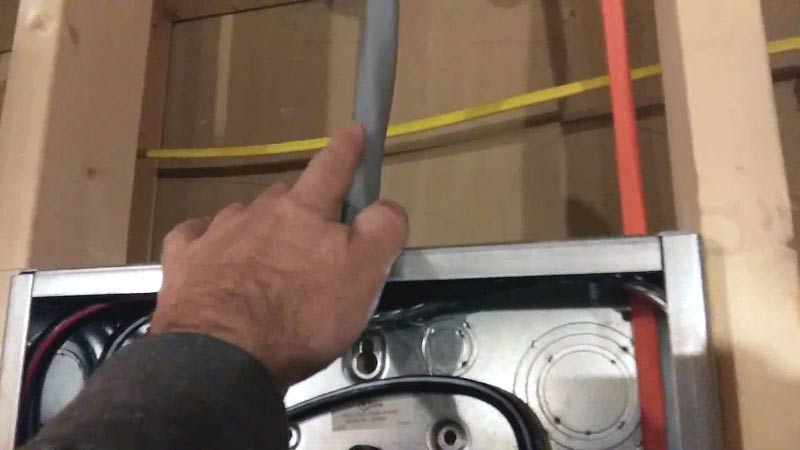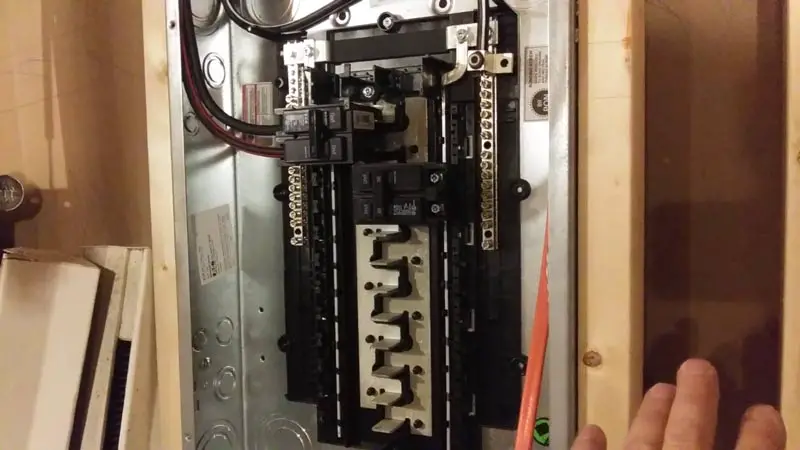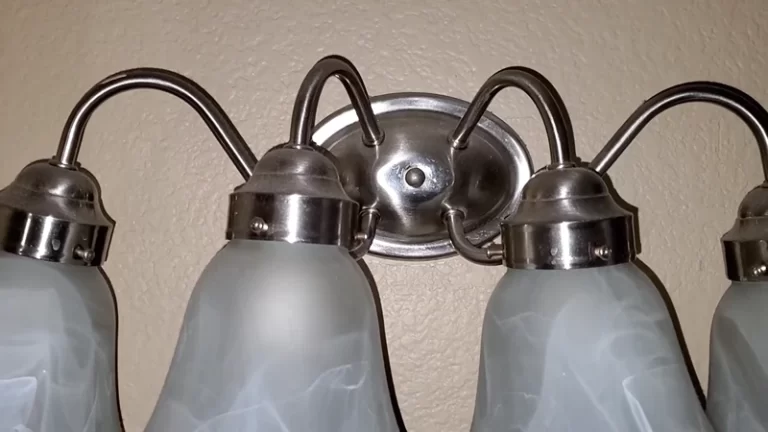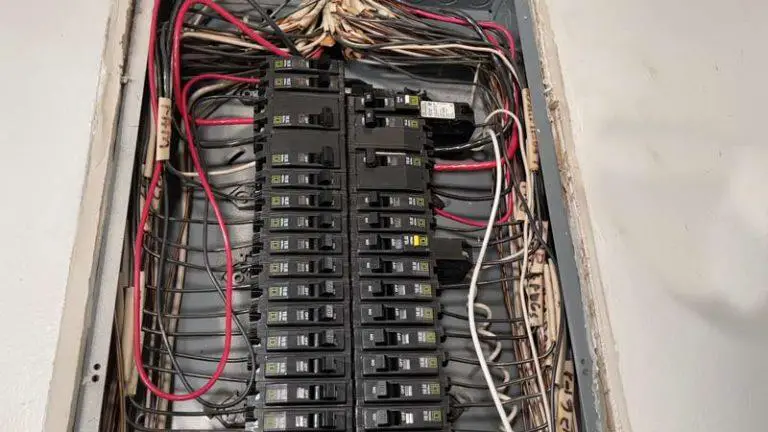Can Ser Cable Be Exposed?

An electrical service entrance is the point at which the main electrical service comes into a building or structure. It is typically located near the meter box or distribution panel, and it is the connection point between the utility’s electrical supply and the building’s electrical system.
The service entrance typically includes a service head, gooseneck, and service-entrance cables, which are used to distribute power from the utility service to the electrical panel.
The service entrance is a critical component of the electrical system, and it must be properly installed and maintained to ensure the safety and reliability of the electrical system.
You'll Learn About
Can Ser Cable Be Exposed?
According to the National Electrical Code (NEC), Type SE (service entrance) cable is allowed to be run exposed in certain conditions. The NEC allows for one exception to the requirement for securely fastening NM-cables at panel entry.
As long as the cables enter the top of a surface-mounted panel box through a non-flexible raceway that is between 18 inches and 10 feet long, and meet the following additional requirements:
- The cables are not subject to physical damage.
- The raceway is securely fastened to the building or structure.
- The raceway provides adequate protection from moisture and physical damage.
- The raceway is made of material that is suitable for the environment where it is installed.
Type Se
Type SE cable is typically used for service entrance wiring, which means it is used to connect the main electrical service to the distribution panel or meter box. The cable is rated for 75°C or 90°C conductor insulation and is suitable for use in dry locations.
It is not rated for wet or damp locations, so it should not be used in areas where it may be exposed to moisture.
Run in Conduict?
In general, it is recommended to run electrical cables inside conduit in order to protect them from physical damage and moisture. Conduit provides a more secure and durable solution for running electrical cables.
It can help ensure that the cables are installed in compliance with the NEC and local building codes. It is important to consult with a licensed electrician for proper installation of electrical cables, including the use of conduit and SE cable.
Can Ser Cable Be Run Outside?
SER cable, or Type SE service entrance cable, is a type of electrical wiring used for service entrance applications. It is typically used to connect the main electrical service to the distribution panel or meter box.
Where is Ser Cable Typically Used?
SER cable is typically used for service entrance wiring, which means it is used to connect the main electrical service to the distribution panel or meter box. It is commonly used in residential and commercial buildings to distribute power from the utility service to the electrical panel.
Can Ser Cable Be Run Outside?
According to the National Electrical Code (NEC), Type SE (service entrance) cable is allowed to be run outside in certain conditions.
The NEC allows for one exception to the requirement for securely fastening NM-cables at panel entry, as long as the cables enter the top of a surface-mounted panel box through a non-flexible raceway that is between 18 inches and 10 feet long, and meet the following additional requirements:
- The cables are not subject to physical damage.
- The raceway is securely fastened to the building or structure.
- The raceway provides adequate protection from moisture and physical damage.
- The raceway is made of material that is suitable for the environment where it is installed.
What Are the Limitations of Using Ser Cable Outside?
SER cable is not rated for wet or damp locations, so it should not be used in areas where it may be exposed to moisture. In addition, the cable should be protected from physical damage by using a suitable raceway or conduit.
What Are the Benefits of Using Ser Cable for Service Entrance Applications?
SER cable is a durable and reliable option for service entrance applications. It is rated for 75°C or 90°C conductor insulation and is suitable for use in dry locations. It is also available in various sizes and conductor configurations to meet the specific needs of different installations and time.
What Are Some Alternatives to Using Ser Cable Outside?
In areas where SER cable may be exposed to moisture, it is recommended to use alternative types of cable that are rated for wet or damp locations.
Examples of such cables include Type MC (metal-clad) cable and Type UF (underground feeder) cable, which are specifically designed for use in wet and damp environments. These cables are also available in various sizes and conductor configurations to meet the specific needs of different installations.
How Often Should Ser Cable Be Supported?
According to the National Electrical Code (NEC), service-entrance cables, including Type SE (service entrance) cable, should be supported by straps or other approved means within 12 inches of every service head, gooseneck, or connection to a raceway or enclosure, and at intervals not exceeding 30 inches.
This requirement is in place to ensure that the cables are properly supported and are not subjected to undue mechanical strain, which can cause damage to the cables and potentially lead to electrical hazards.

Service-entrance cables, including SER cables, are typically used to connect the main electrical service to the distribution panel or meter box.
These cables carry high levels of electrical current, so it is important to ensure that they are properly supported and installed in accordance with the NEC and local building codes. Proper support of service-entrance cables can help prevent damage to the cables and ensure the safety of the electrical system.
Conclusion
The electrical service entrance is a vital component of a building’s electrical system. It is the point at which the main electrical service comes into the building.
It is responsible for distributing power from the utility service to the electrical panel. The service entrance typically includes a service head, gooseneck, and service-entrance cables.
It must be properly installed and maintained to ensure the safety and reliability of the electrical system.
It is important to follow the National Electrical Code (NEC) and local building codes when installing and maintaining the service entrance.
Also, you need to consult with a licensed electrician for proper installation and maintenance of the electrical service entrance.


